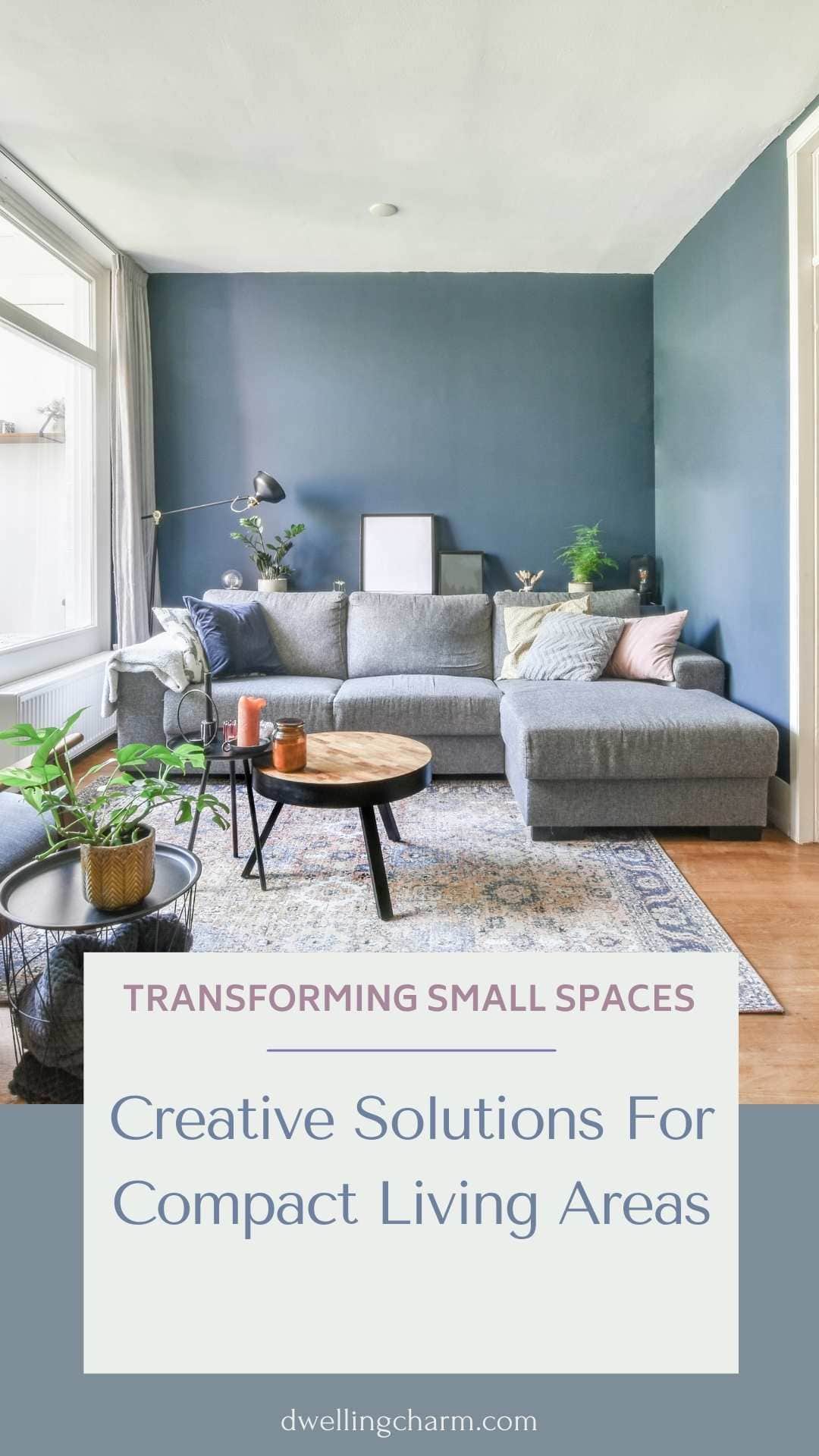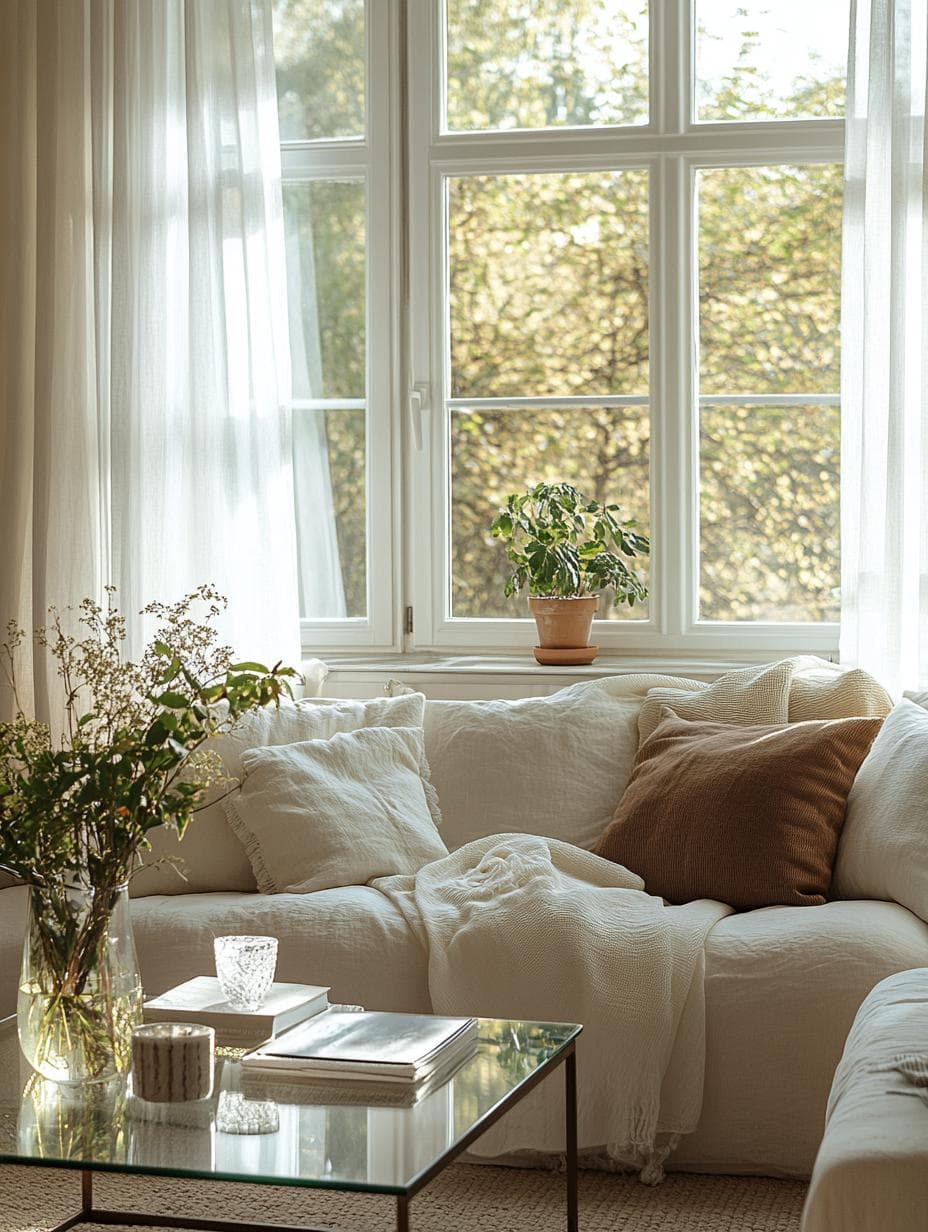Living in a small space can feel challenging, but it opens up a world of creative opportunities. With smart design choices and clever storage solutions, you can maximize every inch of your compact living area. By thinking outside the box, you can create a stylish and functional environment that suits your lifestyle.

From choosing multifunctional furniture to playing with colors and textures, there are many ways to transform your home. You can make your small space feel larger and more inviting. Whether you’re working with an apartment, a tiny house, or just a small room, there are plenty of big ideas waiting to be explored.
Get ready to embrace the art of compact living. In this blog post, you will discover practical tips and inspiring ideas that will help you turn your small space into a cozy retreat. Let’s dive into the world of small spaces and see how great design can make a big difference!
Understanding Small-Space Challenges
Living in a small space comes with unique challenges that can feel overwhelming. Two major issues you may face are clutter and the perception of space. Addressing these can make your home more enjoyable and functional.
Combatting Clutter
Clutter can quickly take over any small living space. It not only makes your area look messy but also impacts your mood and productivity. To tackle this issue, start by sorting items into categories:
- Keep: Things you use regularly.
- Donate: Items in good condition but no longer needed.
- Trash: Broken or unusable items.
Invest in storage solutions like baskets or ottomans that double as seating. Using vertical space with shelves or hooks can help keep belongings off the floor and make your area look tidy. Regularly reviewing your items can help maintain a clutter-free environment.
The Illusion of Space
In a small living area, the way you design and arrange your space can greatly affect how it feels. Creating the illusion of space is key to making your home look larger. Here are some tips to consider:
- Color Choices: Use light colors for walls and furniture to reflect light.
- Mirrors: Adding mirrors can make the room seem bigger by reflecting light and creating depth.
- Open Layouts: Avoid bulky furniture that breaks up flow. Choose pieces that fit well and allow for easy movement.
By implementing these strategies, you can help your small space feel more open and inviting.
Maximizing Natural Light

Natural light can make your small space feel larger and more inviting. By using specific methods, you can enhance brightness and create a more open atmosphere.
Window Sill Utilization
Your window sills can be a smart way to take advantage of natural light. Start by keeping them clear of clutter. Use planters with small indoor plants or herbs that don’t take much space.
Choose light-colored pots to reflect more sunlight. You can also place decorative items that sparkle, like glass or crystal, to catch and bounce light around the room.
If your windows allow, add sheer curtains. They will gently diffuse the light coming in, brightening your space without blocking it. Good utilization of your window sills makes every ray count.
Reflective Surfaces and Mirrors
Using reflective surfaces can change how light flows in your space. Mirrors are your best friend here. Placing a large mirror opposite a window can create the illusion of more light and space.
You can also choose furniture with glass or shiny finishes. A coffee table with a glass top, for example, will reflect light and make the room feel airier.
Consider using light-colored walls as they reflect light well. If you’re up for it, try painting one wall a lighter shade to enhance brightness further. These choices will help you maximize natural light in your home.
Strategic Furniture Selection
Choosing the right furniture is key to maximizing the potential of small spaces. Focus on pieces that serve multiple functions, reduce size while maintaining comfort, and provide flexibility for different needs. Here are some effective strategies to consider.
Multi-Functional Pieces
Multi-functional furniture is perfect for compact living. Think about pieces that combine storage and seating. For example, a storage ottoman not only provides a place to rest your feet but also hides blankets or magazines inside.
Another good choice is a convertible dining table that can be used for meals or as a workspace. Look for items that can fold or expand, making them easy to store when not in use. This versatility helps you make the most of limited space.
Scaling Down Furniture Size
When selecting furniture, scaling down is important. Instead of traditional sofas, consider smaller loveseats or chairs that fit your space better. Look for designs with slim profiles that leave more room for movement.
To maintain functionality, choose small furniture that still offers comfort. For example, size down on bulky coffee tables and opt for sleek, low-profile options. The right measurements can prevent overcrowding while ensuring your space feels open and inviting.
Sofa Beds and Nesting Tables
Sofa beds are excellent for small spaces, providing both seating and sleeping options. They’re perfect for guests, allowing you to transform your living room into a bedroom when needed. Choose a stylish model that complements your decor while remaining practical.
Nesting tables are another smart choice. They easily tuck away when not in use and can be pulled out for extra surface area when needed. This flexibility is essential in tight spaces. Search for nesting tables that fit your style and can adapt to various activities, from game nights to late-night snacks.
Smart Storage Solutions

Maximizing space in small areas can be a challenge, but smart storage solutions can help you stay organized and stylish. By using vertical space, built-in options, and under-bed or under-bench storage, you can create a functional living area without feeling cramped.
Utilizing Vertical Space
One of the best ways to create more storage is by thinking up. Wall shelves can hold books, decorative items, or even plants. Use tall bookcases to draw the eye upwards and make your space feel larger. You can also install floating shelves to free up floor space.
Consider using hooks or pegboards for hanging items like bags, hats, or kitchen utensils. This keeps things off surfaces and allows for easy access. Over-the-door organizers are another great choice for storing shoes or accessories without taking up valuable floor space.
Built-In and Hidden Storage
Built-in storage can be a game changer for small spaces. When you choose furniture with built-in features, like storage ottomans or benches, you provide a stylish solution for keeping items hidden yet accessible.
Consider customizing your shelving or cabinetry to fit your space perfectly. This can include nooks for books or corner shelves that make good use of otherwise wasted areas. Always think about hidden compartments, such as secret drawers, which can be found in many modern furniture pieces.
Under-Bed and Under-Bench Options
Utilizing the space under your bed or benches is a smart way to add extra storage. Under-bed storage bins are perfect for keeping out-of-season clothes, shoes, or extra bedding. Choose bins that easily slide out so you can reach your items without hassle.
For benches, consider those designed with storage inside. Cushioned benches can serve as seating and also hold items like blankets or books. You can even use this space for shoes or sports equipment. Keeping these areas organized helps you maximize space and maintain a tidy environment.
Design Techniques to Enhance Space
Transforming small areas into functional and beautiful spaces is achievable with the right design techniques. Key methods include using color and light effectively, adopting open floor plans, and creating defined areas that maximize usability.
Utilizing Color and Light
Choosing the right colors can change how you perceive a room. Light colors, such as whites, beiges, and pastels, reflect more light and create an airy feel. This makes your space seem larger.
Layered lighting is also important. By combining ambient, task, and accent lighting, you can add depth and warmth. For example, a floor lamp next to a light-colored sofa can highlight your living room layout while providing necessary illumination.
Don’t forget to use mirrors! They can reflect light and make a room feel more open. Place mirrors opposite windows to maximize natural light.
Open Floor Plans
Open floor plans are perfect for small spaces. By knocking down unnecessary walls, you create a seamless flow between rooms. This design makes your home feel much larger and more connected.
Think about how you can arrange your furniture to enhance this effect. For example, a sleek sofa can define the living area without blocking sightlines.
You can also use furniture pieces like a room divider to subtly separate spaces. This keeps areas defined while maintaining openness. Open spaces encourage better movement and make living areas feel more inviting.
Creating Defined Areas
In small spaces, defining areas is essential for functionality. Use furniture placement to create different zones without building walls. A rug can outline your living room area, while a desk in a corner designates a workspace.
Incorporate multi-functional furniture. For instance, a coffee table with storage can serve as both a surface for drinks and a place to tuck away items. This keeps your space tidy.
Decoration can also define spaces. Use distinct color schemes for different areas to give each zone its own identity. Mixing textures adds interest and helps separate functions visually, making your compact living area more enjoyable.
Creative Arrangements and Layouts

Small spaces can benefit from creative layouts. Using your walls, corners, and multi-functional furniture can maximize your area while keeping it stylish and functional.
Gallery Walls and Corner Utilization
A gallery wall is a great way to express your personality without taking up floor space. Hang a mix of framed photos and art in a cohesive style. This creates a focal point that draws the eye up, making the room feel larger.
Utilizing corners often gets overlooked. You can place tall bookshelves or corner shelving units there. These pieces not only provide storage but also help make the most of your available space. Consider adding a cozy chair in the corner for a reading nook.
Space-Saving Appliances and Furniture
Look for space-saving appliances designed for small living. Compact kitchen appliances can fit into tight spaces without sacrificing function. For example, a slim microwave or a two-burner cooktop can replace bulkier options.
Furniture with dual purposes can also help. A coffee table that turns into a dining table or an ottoman with storage can serve multiple needs. Choose pieces that fit your style while being practical. This clever approach keeps your space tidy and organized.
Loft Beds and Wall-Mounted Shelves
Loft beds can be a game-changer in smaller bedrooms. Elevating your bed opens up floor space for a desk or lounging area underneath. This maximizes your area effectively, giving you more room to move around.
Wall-mounted shelves provide extra storage without taking up valuable floor space. You can place them in your kitchen for spices, in the living room for books, or in the bathroom for toiletries. Use attractive baskets on these shelves to keep things organized while adding visual appeal to your compact space.
Embracing a Minimalist Lifestyle
A minimalist lifestyle focuses on simplicity and functionality. By reducing clutter and unnecessary items, you can maximize your space and create a more peaceful environment. This approach lets you appreciate what truly matters in your living area.
Less Is More
The principle of “Less Is More” is key to minimalism. Start by evaluating your belongings. Keep only what you use and love. This will help eliminate distractions and improve your home’s flow.
Here are some steps you can take:
- Declutter Regularly: Schedule time to remove items you no longer need.
- Choose Quality Over Quantity: Invest in durable items that serve multiple purposes.
- Mindful Purchasing: Before buying, ask yourself if the item adds value to your life.
Practicing minimalism creates a serene space that feels larger, regardless of your home’s size.